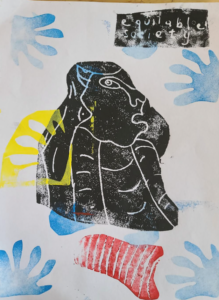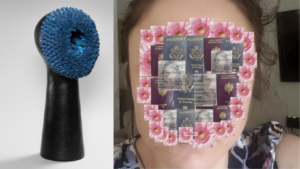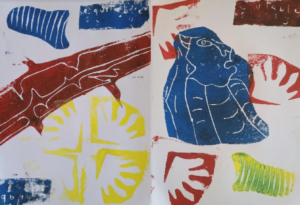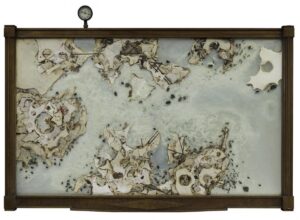The Phillips Collection 2021-2022 Sherman Fairchild DEAI (Diversity, Equity, Accessibility, and Inclusion) and Curatorial Fellow Alexis Boyd shares her experience working on the Institutional History Project.

For the past year, as a 2021-2022 Sherman Fairchild Fellow, I have had the exciting opportunity to be a part of the inauguration of The Phillips Collection’s Institutional History Project. Upon beginning my fellowship last May, it became immediately apparent to me that I had joined the museum at a critical turning point not only for The Phillips Collection but for museums and cultural institutions, in general. The 2020 protests against police brutality and systemic racism after the brutal murders of George Floyd, Breonna Taylor, and countless other Black lives at the hands of police prompted museums across the world to turn a critical eye toward their institutions and the museum field. Countless art museums publicly acknowledged, many for the first time, long-standing criticisms of their complicity in maintaining eurocentrism, cultural and structural racism, elitism, and systemic oppression.
In 2018, The Phillips Collection announced its commitment to DEAI by appointing a chief Diversity Officer, Makeba Clay. During her tenure and an as part of the museum’s 2020-2025 Strategic Plan, the Institutional History Project was launched. Led by the curatorial and DEAI departments, it seeks to deepen our knowledge of our history through socio-cultural, political, and intersectional lens, to critically and consciously engage our past and address issues of system racism and inequity, as we consider how we will chart a meaningful and relevant future.
I have been responsible for conducting the preliminary research necessary for a DEAI-engaged institutional historical study. Over the past year, I have studied digital and physical archival materials and reviewed a number of books and articles to critically interrogate and deconstruct the museum’s existing rhetorical history. To deepen the investigation, we convened a community of scholars to learn more about local history and the Phillips’ relationship to the greater DC community. Throughout, I was deeply aware of both the great scope of the project and my limited ability to address all of the equally vital areas of inquiry the project invites within the year of my fellowship. However, upon further reflection, I realized my work this year has been guided by a few principles that articulate my considerations on how one might begin a DEAI-led, self-critical, and community engaged Institutional History project.
- Practice Critical Self-Examination First. In order to responsibly and authentically conduct a DEAI-led historical investigation, museums must first openly and critically analyze their own historical legacies, the narratives employed to make sense of them, and the ways both have informed and continue to inform the institution’s identity and practices. Similarly, the histories museums choose to tell about their origins, founders, and collections, and the ones they choose to disregard are never neutral. Rather than ignore or attempt to mitigate the often harmful impacts of their—to borrow a term from Aletheia Wittman—institutional genealogies, museums must turn a critical eye to their collections, staffs, and incumbent narratives to determine what and who they choose to include and what and who they choose to leave out. While this work is often uncomfortable it is also necessary to better understand the present-day challenges diverse, intersectional audiences may face when engaging with museum and cultural spaces.
- Frame Your Institutional History Project within a Broader Context. An institutional history project needs to be intersectional. Museum’s identities are shaped by a mix of internal and external forces. An institutional history project that privileges one over the other would not only be incomplete, but would also reinforce the dominant cultural paradigms that a DEAI-driven project should seek to disrupt. Washington, DC, for example, gave birth to aesthetically complex, and diverse art movements (Black, Indigenous, LGBTQ+, Asian, and Latinx, etc.) that—while often unacknowledged in dominant art historical narratives—critically influenced the cultural scenes they were a part of as well as the broader DC culture.
- Engage the Knowledge and Expertise of Your Communities. One of the most generative and informative experiences of my fellowship was organizing and participating in our 2022 Institutional History Research Convening. Our six panelists were composed of scholars, artists, archivists, and life-long DC residents who spoke about aspects of DC’s history from the 1940s-1970s. Their presentations and the discussion they generated not only addressed the political, social, cultural, and economic arrangements that shaped the lives of DC’s most vulnerable residents but also spoke to what it was like to live through them. The advisors lent the project a breadth and depth of knowledge that we could not achieve on our own.
Now, at the end of my fellowship, I have a greater understanding of the complexity and importance of this kind of work. The Phillips Collection’s Institutional History project is ongoing and will inevitably bring forth new lines of inquiry and historical narratives that I am unable to anticipate. I look forward to seeing its continued growth and development.
Some digital resources for DEAI-led institutional histories:
- MASS Action Blog and MASS Action Toolkit
- Incluseum
- Aletheia Wittman’s Institutional Genealogy





